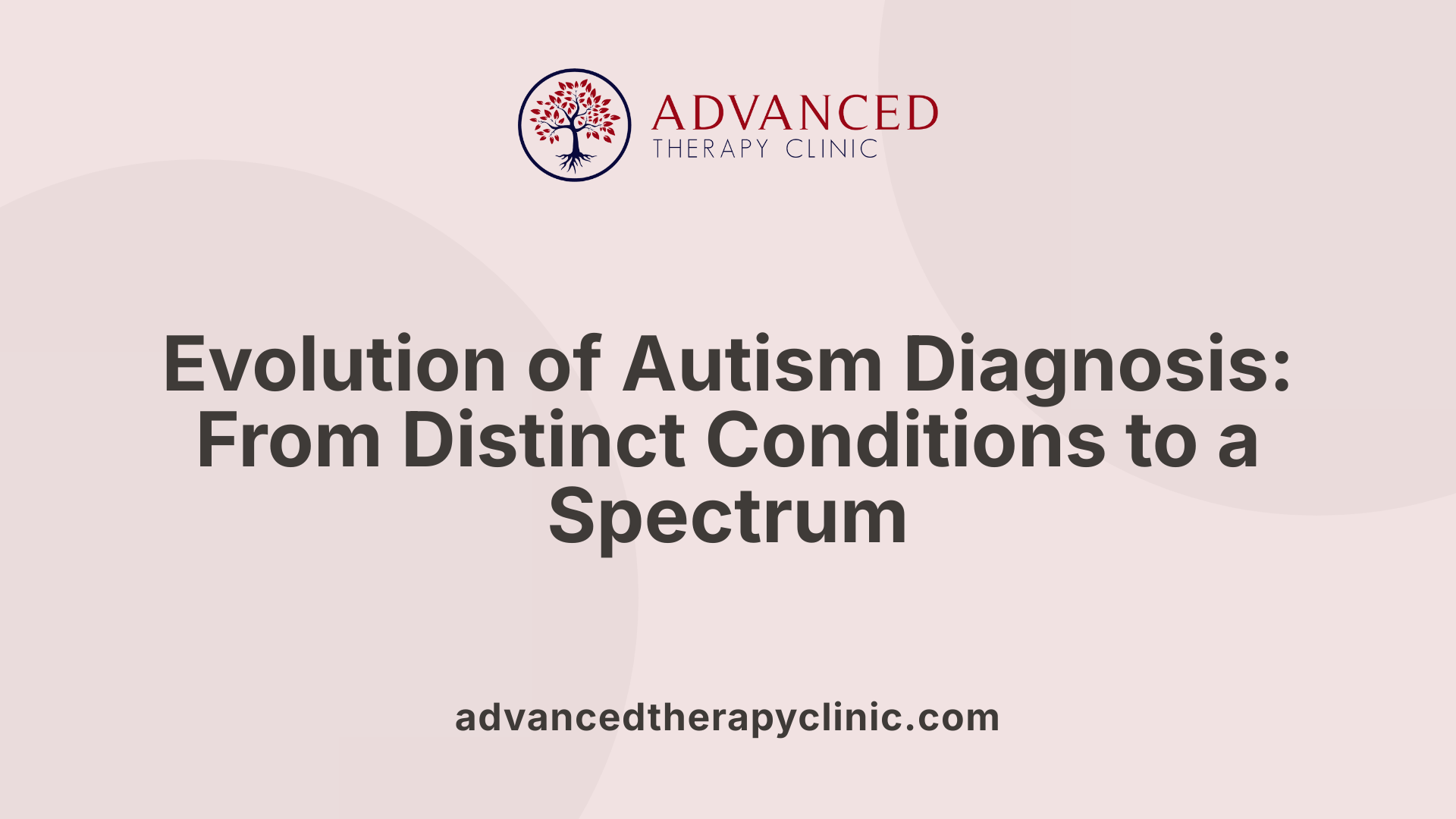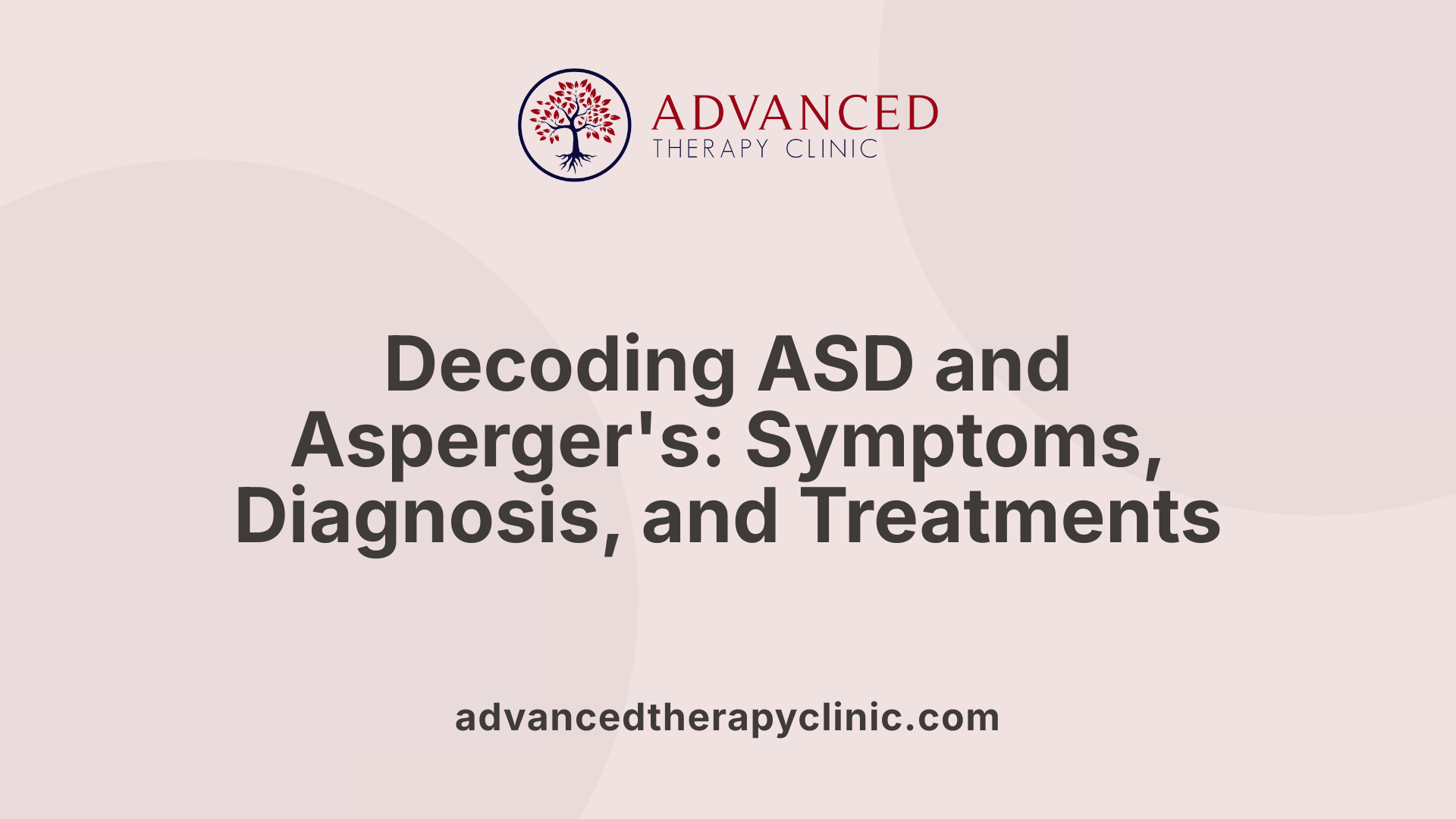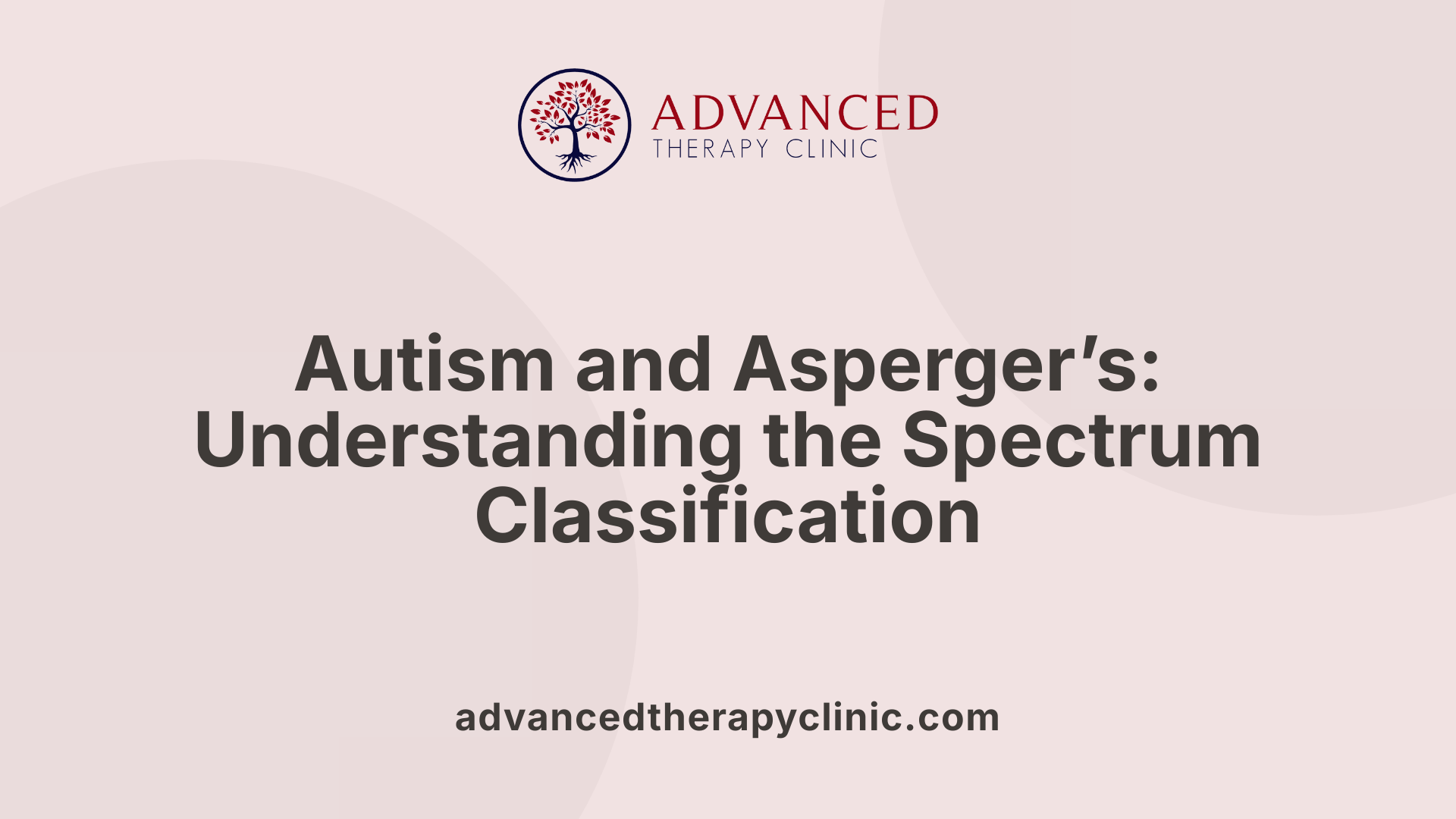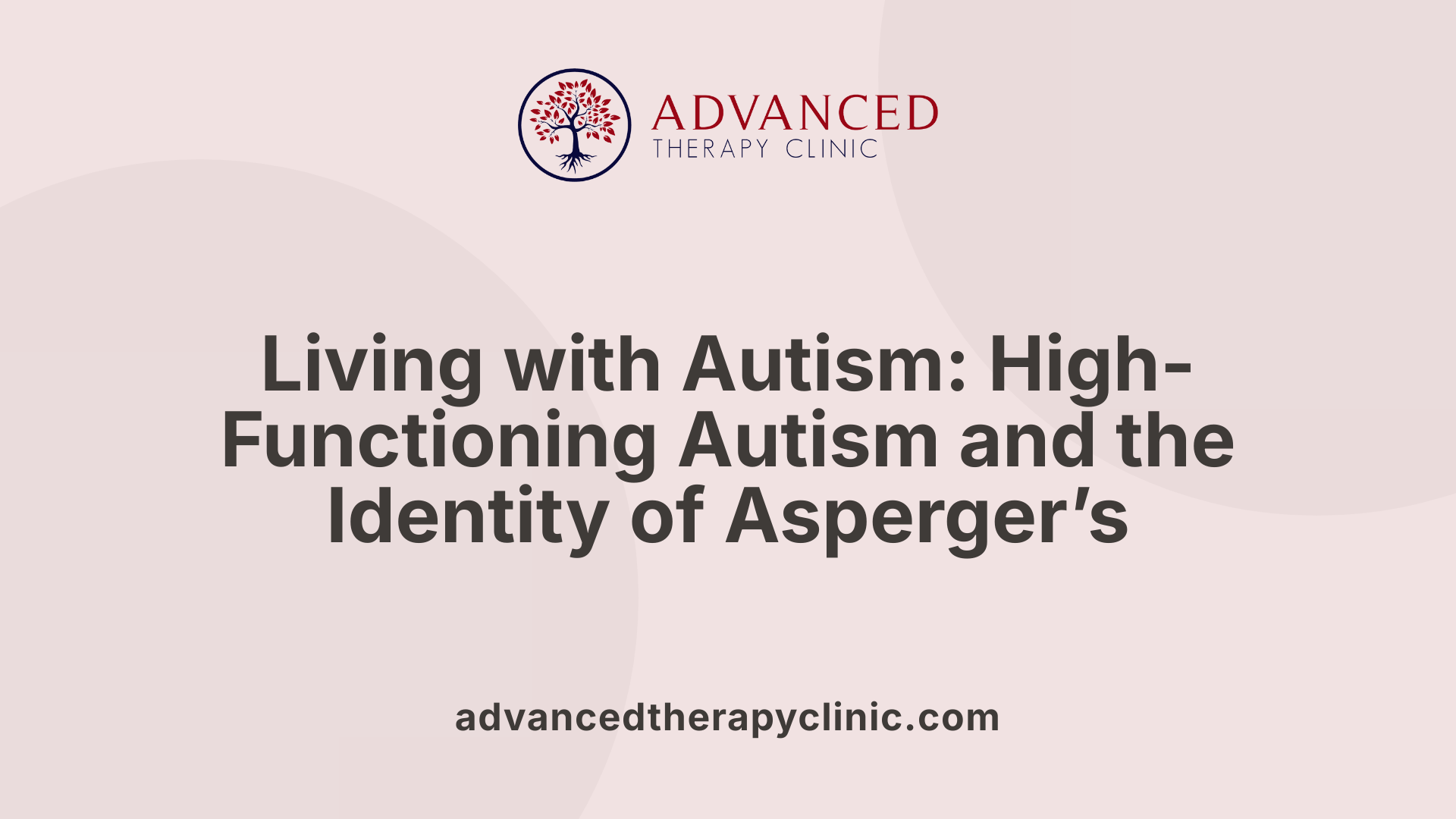Is Autism the Same As Aspergers


Unraveling the Differences and Similarities within the Autism Spectrum
The question of whether autism and Asperger’s syndrome are the same is common, reflecting ongoing shifts in diagnosis and understanding within the neurodevelopmental community. Historically regarded as separate conditions, both are now recognized as part of the broader autism spectrum disorder (ASD). This article delves into their symptoms, history, classification, and the nuances that distinguish or unite these conditions, providing clarity for individuals, families, and professionals.
Historical Perspective and Classification Changes

What are the symptoms and diagnostic criteria for autism spectrum disorder and Asperger's syndrome?
Autism spectrum disorder (ASD) now includes a variety of symptoms that affect social communication, behavior, and interests. Typical signs involve difficulty establishing social relationships, challenges understanding social cues, and repetitive routines or fixations. There are no specific medical tests for ASD; diagnosis depends on observing behaviors over time through developmental and behavioral assessments.
Children with ASD and Asperger’s exhibit differences in language, social interaction, and behavior patterns. Asperger’s syndrome, previously recognized as a distinct condition, was mainly characterized by the absence of language delays and normal or above-average intelligence, alongside social difficulties and narrow interests.
The DSM-5 (2013) and ICD-11 (2019) now categorize Asperger’s under the umbrella term of ASD, with severity levels indicating the support needed. Level 1, formerly called Asperger’s, involves milder symptoms where individuals often function independently. Other ASD conditions like Rett syndrome and childhood disintegrative disorder feature additional complexities such as cognitive regression or atypical social patterns.
Diagnosis requires detailed behavioral evaluations and developmental history, not laboratory tests. Treatment options focus on therapies to improve social skills, communication, and adaptive functioning. While there is no cure, early diagnosis and intervention can help improve quality of life for individuals across the spectrum.
Understanding Autism Spectrum Disorder and Asperger’s Syndrome

What are the symptoms and diagnostic criteria for autism spectrum disorder and Asperger's syndrome?
Autism spectrum disorder (ASD) includes a wide range of symptoms primarily impacting social communication, behavior, and interests. Individuals with ASD often find it challenging to interpret social cues, making social interactions difficult. Repetitive behaviors, narrow interests, and strict routines are common. Diagnosis involves detailed behavioral assessments and developmental history, as there are no specific medical tests for ASD.
Asperger’s syndrome, now classified under ASD at level 1 severity in the DSM-5, is marked by difficulties in social interactions and restrictive interests but usually without delays in speech or cognitive abilities. People with Asperger’s typically have average or above-average intelligence and no significant language delays.
Previously, ASD included several diagnoses like Rett syndrome and childhood disintegrative disorder, each with unique traits such as skill regression or unusual social behaviors. Current diagnostic standards emphasize behavioral observation and developmental history, with interventions focusing on behavioral therapy, speech, and physical therapies. While there is no cure, support strategies help individuals manage symptoms and improve quality of life.
Types Within the Autism Spectrum and Their Characteristics
 There are multiple diagnoses classified under the autism spectrum disorder (ASD), each with distinct features. These include autistic disorder (sometimes called classic autism), Asperger’s syndrome, Rett syndrome, childhood disintegrative disorder (CDD), and pervasive developmental disorder-not otherwise specified (PDD-NOS).
There are multiple diagnoses classified under the autism spectrum disorder (ASD), each with distinct features. These include autistic disorder (sometimes called classic autism), Asperger’s syndrome, Rett syndrome, childhood disintegrative disorder (CDD), and pervasive developmental disorder-not otherwise specified (PDD-NOS).
Asperger’s syndrome was known for challenges in social interaction and rigid behaviors but typically did not involve delays in language development or cognitive ability. It was often perceived as a milder form of autism, with individuals having average or above-average intelligence. Today, Asperger’s has been reclassified as Level 1 ASD within the broader spectrum, reflecting its generally lesser support needs.
Rett syndrome primarily affects girls and involves a loss of mobility, speech, and characteristic hand movements caused by mutations in the MECP2 gene. It is distinguished by progressive neurological decline rather than the static presentation of other ASD types.
Childhood disintegrative disorder (CDD), also called Heller’s syndrome, appears after age three, with children losing previously acquired language and social skills, and often developing motor impairments. It is less common and usually involves more severe deficits.
Kanner’s syndrome, an early term for autism, involves difficulties forming emotional attachments, along with repetitive and restrictive behaviors. It shares many features with current autism diagnoses but was diagnosed via different criteria historically.
PDD-NOS is used for children exhibiting some autistic traits but who do not meet the full diagnostic criteria for other specific conditions. Usually, they have milder symptoms or less impairing behaviors.
Overall, these types differ primarily in age of onset, severity of symptoms, and specific traits like communication abilities or motor skills. Despite their differences, they all fall under the umbrella of ASD, which signifies a spectrum of neurodevelopmental conditions impacting social interaction, communication, and behavior.
Are Autism and Asperger’s Syndrome Still Considered Different?

Current diagnostic approach
Since 2013, the way clinicians diagnose autism and Asperger’s syndrome has changed significantly. Instead of treating them as separate conditions, medical professionals now evaluate both under the unified diagnosis of autism spectrum disorder (ASD). This multisystem approach is reflected in the diagnostic manuals used worldwide, aligning diagnoses with a spectrum model rather than discrete categories. The focus is on identifying specific behavioral and developmental patterns, regardless of previous labels.
Official classification systems
The main classification systems, DSM-5 (published in 2013) and ICD-11 (implemented in 2022), no longer recognize Asperger’s syndrome as an independent diagnosis. The DSM-5 combines all autism-related conditions into ASD, with levels indicating support needs. Asperger's, historically viewed as a milder form without cognitive or language delays, is now classified as ASD Level 1, often referred to as 'high-functioning autism.' This change simplifies diagnosis and emphasizes the spectrum's diversity.
Implications of the spectrum model
Viewing autism as a spectrum offers benefits such as personalized support and recognition of varied strengths and challenges. It helps in understanding that symptoms can differ widely, from mild to severe. Many individuals previously diagnosed with Asperger’s still identify with that term personally and socially. However, the spectrum approach also means that some may lose access to specific support services once labeled with Asperger’s, which historically provided targeted assistance. Overall, this shift promotes a more inclusive and nuanced understanding of neurodiversity.
| Aspect | Before 2013 | After 2013 | Comments |
|---|---|---|---|
| Diagnosis | Separate for Asperger’s and autism | Unified under ASD | Reflects spectrum view |
| Support needs | Vary from minimal to extensive | Based on severity levels | Tailored interventions |
| Term usage | Common, recognized | Still used informally | Personal and social identity |
| Classification | ASD subtypes | Spectrum categories (Level 1, 2, 3) | Supports nuanced support plans |
While the medical criteria have evolved, the understanding that autism encompasses a variety of experiences remains central. The move to a spectrum model highlights that autism's presentation is wide-ranging, fostering broader acceptance and more individualized care.
High-Functioning Autism and Self-Identification

How does high-functioning autism compare to Asperger's syndrome?
High-functioning autism (HFA) and Asperger’s syndrome are both considered part of the autism spectrum disorder (ASD). They share many traits, including difficulties with social interactions, a strong focus on specific interests, and a preference for routine. The main difference traditionally cited was in language development and cognitive abilities.
Children with Asperger’s typically do not have delays in language or cognitive development, often possessing average or above-average intelligence. This means they can communicate effectively and may excel in certain areas of learning. In contrast, those with high-functioning autism might experience some delays in language skills and cognitive challenges, although they generally have the capacity for independent functioning.
Since the 2013 release of DSM-5, Asperger’s syndrome is no longer classified as a separate diagnosis. Instead, it is embedded within the broader autism spectrum disorder, specifically categorized as level 1 autism, which indicates milder symptoms and less support needed.
Many individuals previously diagnosed with Asperger’s continue to identify with that term, valuing the label’s connotations of a milder or more 'high-functioning' form of autism. Despite the changing medical classification, the personal and community identities associated with Asperger’s remain significant for many.
Language development and cognition
Children with Asperger’s usually develop language skills on time or early and often demonstrate strong verbal abilities. Their intelligence levels are frequently average or above average, enabling them to engage in complex conversations and academic pursuits.
In comparison, those with high-functioning autism might exhibit some language delays or difficulties, and their cognitive skills can vary widely. Some may need support with specific learning difficulties, but overall, they tend to be capable of functioning independently.
Personal identification and community perspectives
The terms 'Asperger’s' and 'high-functioning autism' carry strong personal and cultural meaning. Many individuals prefer to use these terms to describe their experience, even though the official diagnostic systems favor a spectrum approach. This preference is rooted in the desire to express their unique strengths and challenges.
Support groups, advocacy organizations, and online communities often emphasize the importance of personal identity, allowing individuals to choose labels that resonate with their lived experience.
Support needs and intervention
Support requirements among those with former Asperger’s or HFA are generally less intensive than for individuals with more severe ASD symptoms. They might benefit from social skills training, communication therapies, and strategies to manage sensory sensitivities.
Interventions often aim to help individuals navigate social interactions, develop coping strategies, and access educational or employment opportunities. Many are capable of leading independent lives with appropriate supports.
In summary, while high-functioning autism and Asperger’s syndrome appeared distinct in earlier diagnostic manuals, today they are viewed as variations within the same spectrum. Both groups typically possess strong language skills and intelligence, with support tailored to individual needs.
| Aspect | Asperger's Syndrome (Pre-2013) | High-Functioning Autism | Current Spectrum Classification |
|---|---|---|---|
| Language Development | No significant delay; often normal or advanced speech | Possible mild delays; generally effective communication | Varies; some delays, generally functional communication |
| Cognitive Abilities | Average or above-average IQ | Range from below average to above average | Wide spectrum; supports personalized to needs |
| Support Needs | Usually Level 1 support | Usually Level 1 or 2 support | Level reflects severity; supports tailored accordingly |
| Diagnostic Status | Separate diagnosis (pre-2013) | Separate diagnosis (pre-2013) | Part of ASD in DSM-5 (2013 onward) |
Understanding these distinctions helps in acknowledging individual differences and emphasizes the importance of tailored support and personal identity in navigating life with ASD.
Continuing the Conversation on Neurodiversity
The evolving understanding and classification of autism and Asperger’s syndrome reflect a broader appreciation of neurodiversity. Both share core challenges, such as difficulties in social interactions and behavioral tendencies, yet they also display individual differences in language, intelligence, and support needs. Recognizing Asperger’s as part of the autism spectrum promotes a more inclusive and nuanced approach to diagnosis, support, and acceptance. Whether you identify with the term Asperger's or autism, the focus remains on understanding, respect, and providing tailored support to help individuals thrive within their unique neurodevelopmental profile.
References
- Asperger's vs. Autism: What's the Difference?
- Asperger syndrome (Asperger's) - National Autistic Society
- What is the difference between Asperger's syndrome and autism?
- Asperger's Syndrome - Nationwide Children's Hospital
- Difference Between Autism and Aspergers Syndrome
- What is the difference between autism and Asperger's?
- Asperger syndrome | Autism Speaks
- What is autism? - NHS
- Asperger syndrome - Wikipedia
Recent articles

How Do You Help a 2 Year Old with Autism
Early Steps: Supporting Toddlers with Autism for Lifelong Growth

The Benefits of ABA Therapy for Children with Autism
Unlocking Potential: How ABA Therapy Transforms Lives of Children with Autism

Do Autistic People Get Married?
Exploring Love and Marriage in the Autism Community

Apraxia of Speech
Unlocking the Mysteries of Apraxia of Speech: Challenges and Therapeutic Innovations

Creating an IEP for a Child with Autism
Navigating the IEP Journey for Children with Autism

What Are Some Engaging Speech Therapy Games?
Unlocking Communication: The Power of Play in Speech Therapy


